
History and Urbanism of Asmary
Adam Lacina
Asmara lies high in the clouds on a plateau 2500 meters above sea level and is the capital of Eritrea. Essentially, it is a living museum of Italian modern architecture from the first half of the 20th century. This city was formed in the 16th century by the merging of four villages, and according to legend, the son of the Queen of Sheba and King Solomon, Menelik, was born here on the banks of the Mai Bela River, the first in a long line of Ethiopian emperors. Before the arrival of the Italians, the city was primarily a trading center. In 1899, when almost the entire Eritrean coastline along the Red Sea already belonged to the Italians, they succeeded in acquiring Asmara as well. They subsequently declared it the capital of their East African empire and infused it with an unmistakable atmosphere. The first urban planning and buildings were conceived by the Italian architect Oduardo Cavagnari, who, as perhaps the only one, to some extent respected the indigenous population and incorporated elements of local folk architecture into his constructions. At that time, Asmara was divided into four zones: for the local population, European, mixed, and industrial. With the arrival of fascism, the sleepy town gradually transformed into a pulsating metropolis with many factories, restaurants, religious stalls, and a rich cultural background. Asmara became Mussolini's architectural laboratory, where historicizing styles blended with modernity. Italian variants of European functionalism dominated, especially rationalism and Novecento, but futurism and art deco were also present. Asmara acquired a unique, cohesive atmosphere in a short time, which, unfortunately, was marred by racism and the oppression of the local population. This development ended with Italy's capitulation in World War II. Since then, not much has been built; rather the opposite has occurred. Fortunately, during the struggles for Eritrean independence, the city was not damaged, so you can still enjoy a unique atmosphere comparable perhaps only to Havana, Cuba.
At the beginning of the Italian occupation, only 5,000 Eritreans and 300 Europeans lived in Asmara. At that same time, Italy was experiencing economic instability, high unemployment, and a rapidly growing population, making Eritrea a tool for addressing these issues. This, however, did not come without drastic changes in the treatment of the local population and the urban planning of Asmara. The first plans emerged at the beginning of the 20th century. The center of the city became a military camp (Campo Cintato), which stood on an elevated site of the Asmara plateau. Surrounding it were cramped native huts (known as agda) with small vegetable gardens, where mainly soldiers lived. These initial urban plans focused primarily on improving hygiene and targeted mainly the European population. Unfortunately, racial segregation is closely tied to Asmara and has accompanied it throughout most of its history.
In 1908, another plan was created, based on already established experiences and geomorphological realities. Although a grid system was used, old buildings were not demolished; they were incorporated into the plan, resulting in an organic structure for the city with many nooks and small streets. Asmara was divided into four basic parts (European, mixed, indigenous, and industrial). Around the military camp, a European quarter developed, centered around a central Roman square (Piazza Roma). In this square, which still stands today, the governor's palace, a school, a post station, and other administrative buildings were constructed. The European quarter was separated from the mixed part, where most of the trade took place, by the Mai Bela River. In the northern part of the city, around the already existing Orthodox cathedral, a quarter for the local population was created, which was then attached to the industrial quarter.
The third plan from 1913 by Odoardo Cavagnari became the fundamental pillar for the city's final development. The Roman square was enclosed between two busy boulevards, of which Viale Mussolini (now Harnet Avenue) became the center of cultural and social life. A monumental Catholic cathedral, several cinemas, a theater, and many other primarily administrative buildings were constructed here. However, the period of the most tumultuous development was still to come, taking place between 1935 and 1941. New modern movements such as rationalism, Novecento, and futurism burst into the city, transforming it beyond recognition. Cavagnari's concept was supplemented by Vittorio Cafieri, who had the challenging task of dealing with a massive increase in the Italian population, which amounted to nearly 70,000 residents. He excelled at this task and enriched Asmara with some urban gems, such as the square by the Great Mosque or the green surroundings of the cascading Mai Jah Jah fountain.
After the Italians' capitulation in World War II, the British took control of Eritrea, which after the war came under Ethiopian rule. Fortunately, during this period, not much changed in Asmara. Eritrean independence, obtained in 1993, was paid for with much blood during a 32-year-long war with Ethiopia. However, this struggle seemed to miraculously bypass the Eritrean capital, so there is still much to admire, even though time has taken its toll on Asmara.
At the beginning of the Italian occupation, only 5,000 Eritreans and 300 Europeans lived in Asmara. At that same time, Italy was experiencing economic instability, high unemployment, and a rapidly growing population, making Eritrea a tool for addressing these issues. This, however, did not come without drastic changes in the treatment of the local population and the urban planning of Asmara. The first plans emerged at the beginning of the 20th century. The center of the city became a military camp (Campo Cintato), which stood on an elevated site of the Asmara plateau. Surrounding it were cramped native huts (known as agda) with small vegetable gardens, where mainly soldiers lived. These initial urban plans focused primarily on improving hygiene and targeted mainly the European population. Unfortunately, racial segregation is closely tied to Asmara and has accompanied it throughout most of its history.
In 1908, another plan was created, based on already established experiences and geomorphological realities. Although a grid system was used, old buildings were not demolished; they were incorporated into the plan, resulting in an organic structure for the city with many nooks and small streets. Asmara was divided into four basic parts (European, mixed, indigenous, and industrial). Around the military camp, a European quarter developed, centered around a central Roman square (Piazza Roma). In this square, which still stands today, the governor's palace, a school, a post station, and other administrative buildings were constructed. The European quarter was separated from the mixed part, where most of the trade took place, by the Mai Bela River. In the northern part of the city, around the already existing Orthodox cathedral, a quarter for the local population was created, which was then attached to the industrial quarter.
The third plan from 1913 by Odoardo Cavagnari became the fundamental pillar for the city's final development. The Roman square was enclosed between two busy boulevards, of which Viale Mussolini (now Harnet Avenue) became the center of cultural and social life. A monumental Catholic cathedral, several cinemas, a theater, and many other primarily administrative buildings were constructed here. However, the period of the most tumultuous development was still to come, taking place between 1935 and 1941. New modern movements such as rationalism, Novecento, and futurism burst into the city, transforming it beyond recognition. Cavagnari's concept was supplemented by Vittorio Cafieri, who had the challenging task of dealing with a massive increase in the Italian population, which amounted to nearly 70,000 residents. He excelled at this task and enriched Asmara with some urban gems, such as the square by the Great Mosque or the green surroundings of the cascading Mai Jah Jah fountain.
After the Italians' capitulation in World War II, the British took control of Eritrea, which after the war came under Ethiopian rule. Fortunately, during this period, not much changed in Asmara. Eritrean independence, obtained in 1993, was paid for with much blood during a 32-year-long war with Ethiopia. However, this struggle seemed to miraculously bypass the Eritrean capital, so there is still much to admire, even though time has taken its toll on Asmara.
The English translation is powered by AI tool. Switch to Czech to view the original text source.
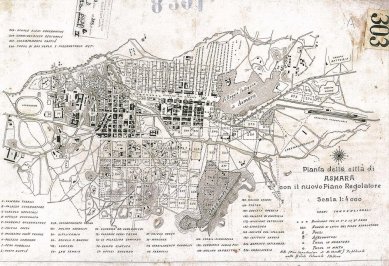
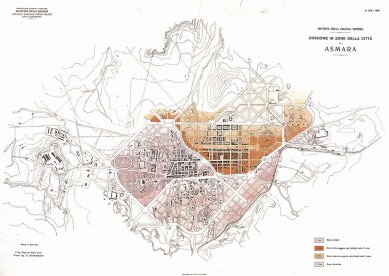
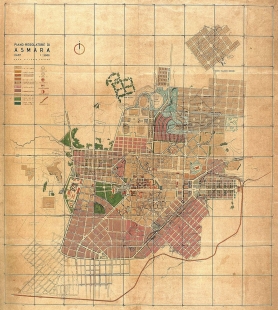
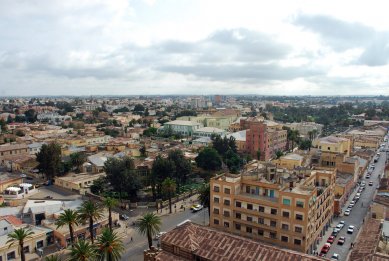
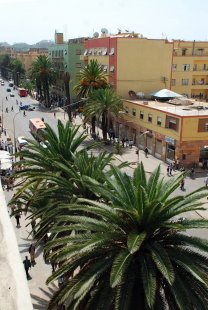
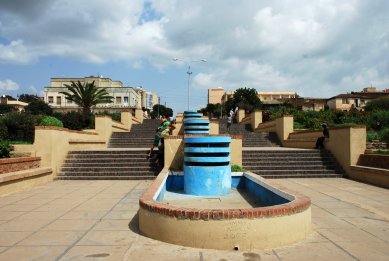
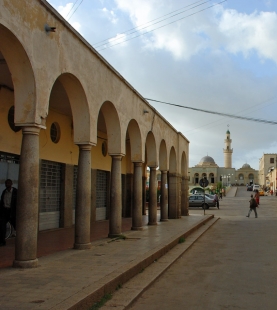

0 comments
add comment







